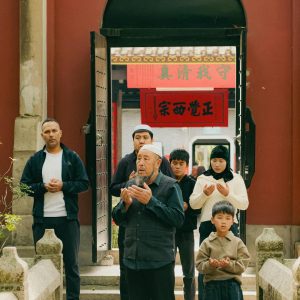Libya revives cannon salute to break Ramadan fast
Tripoli, Libya (AFP):
The blast of a cannon booms across Tripoli, but it doesn’t signal another round of fighting in the Libyan capital — rather, the revival of a long-lost Ramadan tradition.
Officers in berets rolled out a red carpet on the iconic Martyrs’ Square on March 23 for the 600-year-old weapon, setting off a resounding blast moments before the sunset call to prayer.
The cannon, announcing the end of the first daytime fast of the holy month, is a tradition observed across the Muslim world, but Libya had not seen it since the end of the 1970s as dictator Moamer Kadhafi tried to wipe the slate of Libyan history clean.
However, today authorities say they want to bring back the cannon announcing iftar, the meal breaking the fast.
“It’s a way to bring joy to the people of Tripoli,” said Akram Dribika, the city official organising the event. “It sends a message that life has returned” to Libya.
‘Beautiful surprise’
The 2011 revolt that toppled and killed Kadhafi sparked a complex, often violent power struggle that has lasted more than a decade.
However, many Libyans long to express the country’s rich and ancient heritage.
The origin of the ‘iftar cannon’ remains unclear, but it was likely born in Ottoman-ruled Egypt in the 19th century, when authorities wanted to inform a population with few watches or clocks that the fast was nearly over.
In Martyrs’ Square, Nouri Sayeh said he just happened to be passing when he saw the cannon — a “beautiful surprise”.
“This is part of our Ramadan heritage. It’s really important and it’s a tradition we should continue,” the 32-year-old said.
The cannon firing is part of a wider effort by authorities and civil society to revive the old glory of Tripoli, after decades of neglect during Kadhafi’s 40-year rule and the chaos that followed.
Artists, craftsmen and shopkeepers have brought new life to the cobbled alleys, where Roman, Greek and Ottoman subjects walked before them.
Lighting up the old city
After breaking fast, Libyan families flock to the old city and Martyrs’ Square, buying candyfloss for their children. Young people sit on benches and drink coffee or take selfies in front of the Ramadan decorations.
For the second year running, the municipality has adorned the main squares and alleys with buntings, traditional lanterns and shapes of the crescent moon — a symbol of the Islamic lunar month.
Rasha Ben Ghara, who grew up in the neighbourhood, said she loves seeing the crowds and lights.
Years previously, people had to use the torches of their phones to pick through the old city’s unpaved alleyways, she said.
“People used to come to shop in the Souk, but today they come to admire the view and the heritage,” the 35-year-old civil servant said.
Even young people say they love the old city.
Motassam Hassan, a 20-year-old computer science student, said he hoped the rest of Libya could see similar efforts at renovation.
“What we see in the capital should be replicated everywhere, beyond Tripoli, so everywhere lights up like this.”







